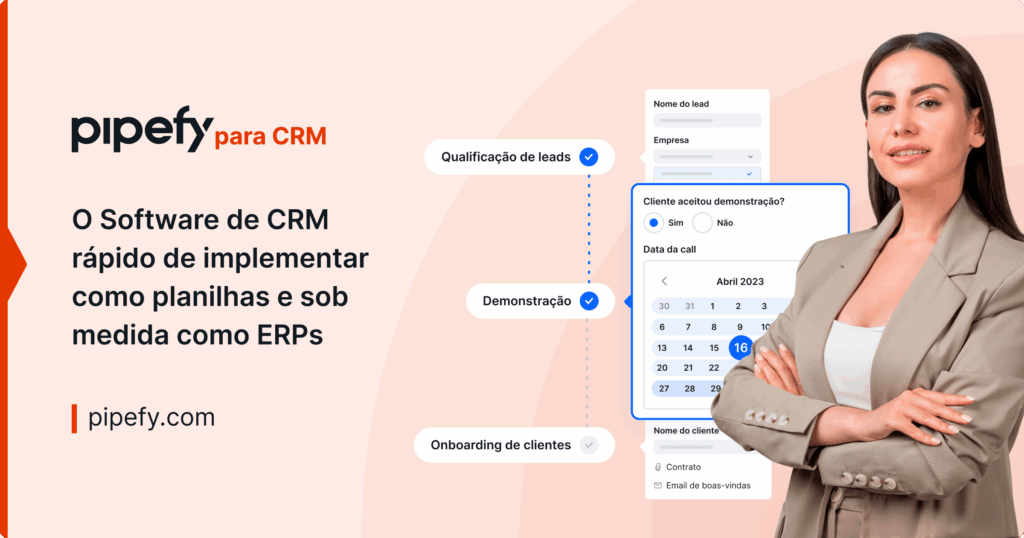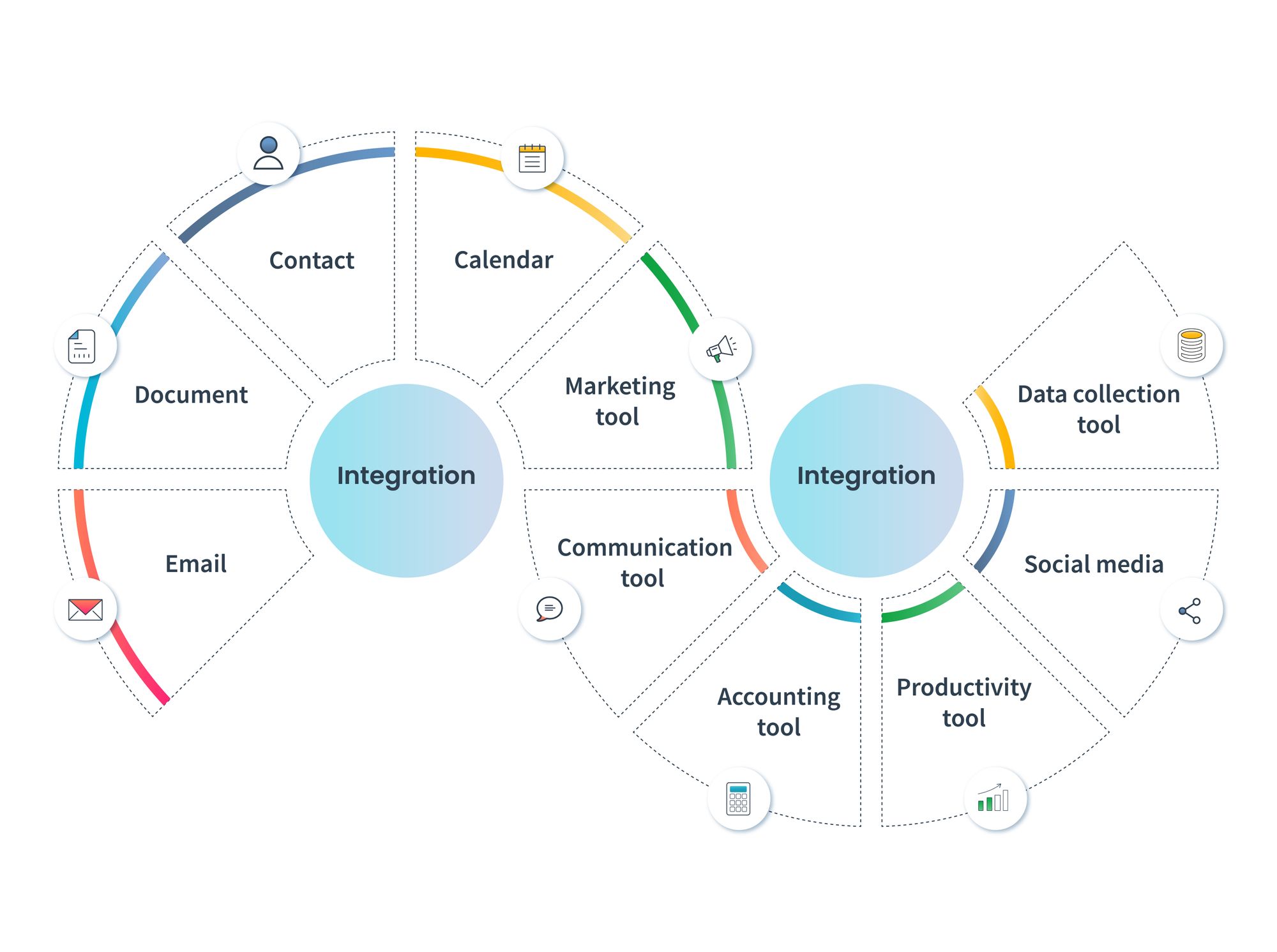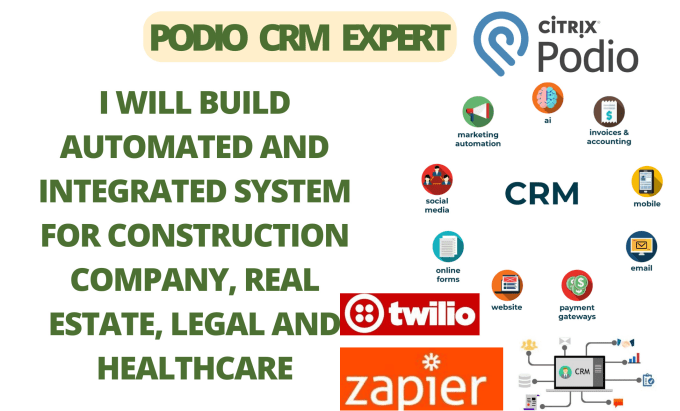
Unlocking Efficiency: The Power of CRM and Pipefy Integration
In today’s fast-paced business environment, the ability to streamline operations and maximize productivity is paramount. Companies are constantly seeking innovative solutions to optimize workflows, enhance customer relationships, and boost overall efficiency. One powerful combination that has emerged as a game-changer for businesses of all sizes is the integration of a Customer Relationship Management (CRM) system with a workflow automation platform like Pipefy. This article delves into the intricacies of CRM integration with Pipefy, exploring the benefits, implementation strategies, and real-world examples to help you unlock the full potential of this dynamic duo.
Understanding the Core Components: CRM and Pipefy
Before we dive into the integration process, let’s establish a clear understanding of the core components: CRM and Pipefy.
What is a CRM?
A Customer Relationship Management (CRM) system is a software solution designed to manage and analyze customer interactions and data throughout the customer lifecycle. It serves as a centralized hub for all customer-related information, providing sales, marketing, and customer service teams with a 360-degree view of each customer. Key features of a CRM typically include:
- Contact Management: Storing and organizing customer contact information, including names, addresses, phone numbers, and email addresses.
- Lead Management: Tracking leads, nurturing them through the sales funnel, and converting them into customers.
- Sales Automation: Automating sales processes, such as lead assignment, follow-up reminders, and quote generation.
- Marketing Automation: Automating marketing campaigns, segmenting audiences, and tracking campaign performance.
- Customer Service: Managing customer inquiries, resolving issues, and providing support.
- Reporting and Analytics: Generating reports and analyzing data to gain insights into customer behavior and business performance.
Popular CRM platforms include Salesforce, HubSpot, Zoho CRM, and Microsoft Dynamics 365.
What is Pipefy?
Pipefy is a cloud-based workflow automation platform designed to streamline and automate business processes. It allows businesses to create custom workflows, automate repetitive tasks, and improve collaboration across teams. Key features of Pipefy include:
- Workflow Automation: Designing and automating workflows to eliminate manual tasks and reduce errors.
- Process Management: Managing and optimizing business processes, from onboarding to project management.
- Collaboration: Facilitating collaboration between teams and departments through shared workspaces and real-time communication.
- Customization: Customizing workflows and processes to meet specific business needs.
- Reporting and Analytics: Tracking key metrics and generating reports to monitor process performance.
Pipefy is particularly well-suited for automating processes in areas such as IT, HR, finance, and operations.
The Synergy: Why Integrate CRM with Pipefy?
Integrating your CRM system with Pipefy can unlock a wealth of benefits, leading to increased efficiency, improved customer satisfaction, and enhanced business performance. Here are some key advantages:
1. Automate Data Transfer
One of the biggest time-wasters in any business is manually transferring data between different systems. Integrating CRM with Pipefy automates this process, eliminating the need for manual data entry and reducing the risk of errors. For example, when a new lead is created in your CRM, the integration can automatically trigger the creation of a new card in Pipefy, initiating a lead qualification workflow.
2. Streamline Workflows
By connecting your CRM and Pipefy, you can streamline workflows across different departments. Sales teams can automatically trigger tasks in Pipefy for order fulfillment, while customer service teams can initiate workflows for resolving customer issues. This ensures that tasks are completed efficiently and consistently, leading to improved productivity and customer satisfaction.
3. Improve Collaboration
Integration fosters better collaboration between teams. When data is synchronized between CRM and Pipefy, all relevant stakeholders have access to the same information, regardless of their department. This promotes transparency, reduces communication silos, and enables teams to work together more effectively.
4. Enhance Customer Experience
By automating processes and improving communication, the integration of CRM and Pipefy can significantly enhance the customer experience. Customers receive faster responses to their inquiries, their issues are resolved more quickly, and they receive more personalized service. This leads to increased customer satisfaction, loyalty, and advocacy.
5. Gain Actionable Insights
The integration of CRM and Pipefy provides valuable insights into your business processes. By tracking key metrics and analyzing data from both systems, you can identify bottlenecks, optimize workflows, and make data-driven decisions to improve performance. This can lead to increased sales, reduced costs, and improved profitability.
Step-by-Step Guide: Implementing CRM Integration with Pipefy
Implementing CRM integration with Pipefy can seem daunting, but with a well-defined plan and the right tools, the process can be relatively straightforward. Here’s a step-by-step guide to help you get started:
1. Define Your Goals and Objectives
Before you begin the integration process, it’s crucial to define your goals and objectives. What do you hope to achieve by integrating your CRM and Pipefy? Are you looking to automate specific workflows, improve data accuracy, or enhance customer service? Clearly defining your goals will help you choose the right integration methods and measure the success of your implementation.
2. Choose Your Integration Method
There are several methods for integrating CRM with Pipefy, each with its own advantages and disadvantages:
- Native Integrations: Some CRM systems and Pipefy offer native integrations, which are pre-built connections that require minimal configuration. These integrations are often the easiest to set up and maintain.
- API Integrations: Both CRM systems and Pipefy have APIs (Application Programming Interfaces) that allow you to build custom integrations. This method offers the most flexibility but requires technical expertise.
- Third-Party Integration Platforms: Platforms like Zapier, Integromat (now Make), and Tray.io provide pre-built connectors and automation tools that simplify the integration process. These platforms are often a good option for businesses that don’t have the technical resources to build custom integrations.
The best integration method for your business will depend on your specific needs, technical capabilities, and budget.
3. Select the Right Integration Tool
Once you’ve chosen your integration method, you’ll need to select the right tools. If you’re using a native integration, you’ll simply need to follow the instructions provided by the CRM and Pipefy. If you’re using an API or a third-party integration platform, you’ll need to evaluate different options and choose the one that best meets your needs.
4. Map Your Data Fields
Data mapping is a crucial step in the integration process. You’ll need to map the data fields from your CRM to the corresponding fields in Pipefy. This ensures that data is transferred correctly and consistently between the two systems. For example, you might map the “First Name” field in your CRM to the “First Name” field in Pipefy.
5. Configure Your Workflows
Once you’ve mapped your data fields, you can configure your workflows in Pipefy. This involves defining the steps in your workflows, assigning tasks to team members, and setting up triggers and automations. For example, you might create a workflow that automatically creates a new card in Pipefy when a new lead is created in your CRM.
6. Test Your Integration
Before you go live with your integration, it’s essential to test it thoroughly. Create test data in your CRM and verify that it’s being transferred correctly to Pipefy. Also, test your workflows to ensure that they’re functioning as expected. This will help you identify and resolve any issues before they impact your business.
7. Monitor and Optimize
After you’ve launched your integration, it’s important to monitor its performance and make adjustments as needed. Track key metrics, such as data accuracy, workflow completion times, and customer satisfaction. Use this data to identify areas for improvement and optimize your integration for maximum efficiency.
Real-World Examples: CRM and Pipefy Integration in Action
To further illustrate the power of CRM and Pipefy integration, let’s explore some real-world examples:
Example 1: Sales Lead Management
A sales team uses Salesforce as their CRM and Pipefy for managing the sales process. When a new lead is created in Salesforce, the integration automatically creates a new card in Pipefy. The card includes the lead’s contact information, company details, and other relevant data. The Pipefy workflow then guides the sales team through the lead qualification process, including assigning the lead to a sales representative, scheduling follow-up calls, and tracking the lead’s progress through the sales funnel. As the lead progresses, updates are automatically synced back to Salesforce, providing the sales team with a complete view of the lead’s status.
Example 2: Customer Onboarding
A SaaS company uses HubSpot as their CRM and Pipefy for customer onboarding. When a new customer signs up for a subscription, the integration automatically creates a new card in Pipefy. The card triggers an onboarding workflow that includes tasks such as sending welcome emails, scheduling training sessions, and setting up the customer’s account. The workflow ensures that all onboarding tasks are completed efficiently and consistently, leading to a positive customer experience and improved customer retention.
Example 3: Order Fulfillment
An e-commerce company uses Zoho CRM to manage customer orders and Pipefy for order fulfillment. When a new order is placed in Zoho CRM, the integration automatically creates a new card in Pipefy. The card triggers a workflow that includes tasks such as verifying the order, processing payment, packing the order, and shipping the order. The workflow streamlines the order fulfillment process, reduces errors, and ensures that orders are shipped on time.
Choosing the Right CRM and Pipefy Integration Partner
While integrating CRM with Pipefy can be a transformative endeavor, finding the right partner or solution is crucial for success. Here’s what to consider:
- Expertise and Experience: Look for a partner with a proven track record of successful CRM and Pipefy integrations. They should have experience with your specific CRM and Pipefy versions and understand your industry’s unique requirements.
- Integration Capabilities: Evaluate the partner’s integration capabilities, including their ability to handle complex data mapping, custom workflows, and API integrations.
- Support and Training: Ensure the partner provides adequate support and training to help you implement and maintain the integration.
- Cost and Timeline: Get a clear understanding of the integration costs and timeline, and ensure they align with your budget and project goals.
- Communication and Collaboration: Choose a partner who is responsive, communicative, and collaborative throughout the integration process.
Consider the following when evaluating potential integration partners:
- Reviews and Testimonials: Research the partner’s reputation by reading online reviews and testimonials from other customers.
- Case Studies: Review case studies to see how the partner has helped other businesses achieve their integration goals.
- References: Ask the partner for references and contact their previous clients to learn about their experience.
Troubleshooting Common Integration Challenges
Even with careful planning, you may encounter some challenges during the CRM and Pipefy integration process. Here are some common issues and how to address them:
Data Synchronization Errors
Data synchronization errors can occur when there are inconsistencies between your CRM and Pipefy data fields or when the integration encounters network issues. To troubleshoot these errors, first, verify that the data fields are correctly mapped. Then, review your integration logs to identify the source of the error. You may need to adjust your data mapping, troubleshoot your network connection, or contact the integration platform’s support team.
Workflow Automation Issues
Workflow automation issues can arise if your workflows are not properly configured or if there are errors in your automation rules. To troubleshoot these issues, carefully review your workflow steps and automation rules. Test your workflows thoroughly to identify any errors. You may need to adjust your workflow configuration or contact Pipefy’s support team for assistance.
Performance Bottlenecks
Performance bottlenecks can slow down your integration and impact your business processes. To address these issues, monitor the performance of your integration and identify any bottlenecks. You may need to optimize your data mapping, adjust your workflow configuration, or upgrade your integration platform. Consider the following to optimize performance:
- Optimize API Calls: Minimize the number of API calls to reduce the load on your CRM and Pipefy systems.
- Batch Data Updates: Batch data updates to reduce the frequency of data transfers.
- Use Caching: Implement caching to store frequently accessed data and reduce the need to retrieve it from your CRM or Pipefy systems.
Security Concerns
Security is always a priority, and integration can introduce potential vulnerabilities. To address security concerns, use secure integration methods, such as SSL encryption, and protect your API keys and credentials. Regularly review your integration security settings and monitor your integration for any suspicious activity. Consider these tips to enhance security:
- Use Strong Authentication: Implement strong authentication methods, such as multi-factor authentication, to protect your integration accounts.
- Limit Access: Restrict access to your CRM and Pipefy data to only authorized users and applications.
- Monitor Activity: Monitor your integration activity for any suspicious behavior, such as unauthorized access or data breaches.
The Future of CRM and Pipefy Integration
The integration of CRM and Pipefy is constantly evolving, with new features and capabilities being added regularly. As technology continues to advance, we can expect to see even more sophisticated integrations that leverage artificial intelligence (AI), machine learning (ML), and other emerging technologies. Here’s a glimpse into the future:
- AI-Powered Automation: AI and ML will be used to automate more complex tasks, such as lead scoring, sales forecasting, and customer service issue resolution.
- Predictive Analytics: CRM and Pipefy will provide predictive analytics, enabling businesses to anticipate customer needs, identify potential risks, and make data-driven decisions.
- Enhanced Personalization: Businesses will be able to personalize customer interactions at scale, delivering more relevant and engaging experiences.
- Seamless Integrations: We can expect to see even more seamless integrations between CRM and Pipefy, with pre-built connectors and automation tools that require minimal configuration.
As the integration landscape continues to evolve, businesses that embrace these advancements will be well-positioned to gain a competitive advantage and achieve long-term success.
Conclusion: Embracing the Power of Integration
CRM integration with Pipefy is a powerful strategy for businesses looking to streamline operations, improve customer relationships, and boost overall efficiency. By automating data transfer, streamlining workflows, improving collaboration, enhancing customer experience, and gaining actionable insights, businesses can unlock the full potential of their CRM and workflow automation platforms.
By following the implementation steps outlined in this article, you can successfully integrate your CRM and Pipefy, and reap the rewards of increased productivity, improved customer satisfaction, and enhanced business performance. Embrace the power of integration and take your business to the next level!


